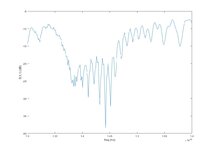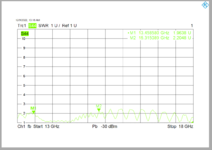Amra1
Newbie
Hello everyone,
I have been working on Parallel Series Fed Microstrip patch antenna array in Ku Band. It is fed with a probe feeding method and designed & simulated on CST. After fabrication, checked its S(1,1) on VNA, multiple dips in S(1,1) plot are observed. What does this tell us about the behavior of the antenna?
Images are attached for reference.
I have been working on Parallel Series Fed Microstrip patch antenna array in Ku Band. It is fed with a probe feeding method and designed & simulated on CST. After fabrication, checked its S(1,1) on VNA, multiple dips in S(1,1) plot are observed. What does this tell us about the behavior of the antenna?
Images are attached for reference.

